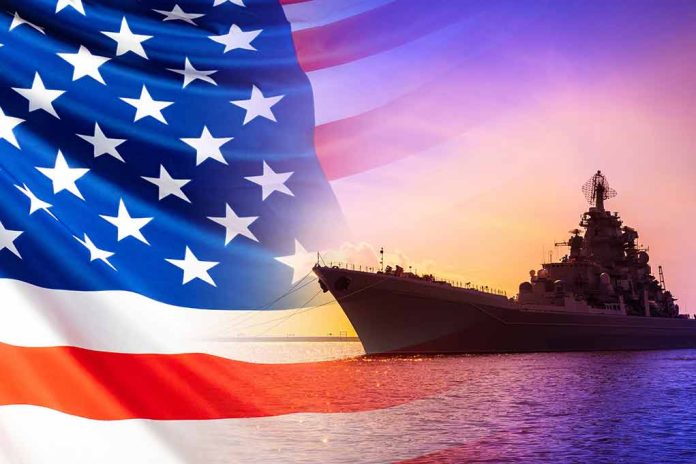
The U.S. Navy has allocated nearly $1 billion to accelerate submarine production, signaling a major push to modernize its undersea fleet amidst growing global challenges.
At a Glance
- U.S. Navy adds $980.7 million to boost submarine production through third-party assistance
- Contract awarded to BlueForge Alliance to enhance U.S. Submarine Industrial Base
- Total Pentagon spending on third-party submarine assistance could reach $4 billion
- Effort aims to address maintenance backlog and meet AUKUS commitments
Navy’s Billion-Dollar Boost for Submarine Production
In a significant move to enhance its undersea warfare capabilities, the U.S. Navy has announced a contract worth up to $980.7 million to BlueForge Alliance, a Texas-based nonprofit. This substantial investment is part of a broader effort to revitalize the U.S. Submarine Industrial Base and support Foreign Military Sales commitments. The decision comes as the Navy faces increasing pressure to modernize its fleet and meet growing strategic needs in a complex global environment.
This latest contract follows a $2.4 billion Defense Department deal with Deloitte to help increase submarine production rates, bringing the total Pentagon spending on third-party assistance for submarine suppliers to nearly $4 billion. The urgency of this investment is underscored by a three-year backlog in submarine maintenance and repair, as well as the additional pressure from the AUKUS agreement to supply submarines to Australia.
Amid Struggle to Build Subs, Navy Gives Company Running Ads and Website a $1 Billion Contract https://t.co/IaGFXpy4pZ
— Military.com (@Militarydotcom) September 12, 2024
Strengthening the Submarine Industrial Base
The BlueForge contract aims to address multiple challenges facing the submarine industry. Key objectives include strengthening and diversifying supply chains, attracting and retaining skilled shipyard workers, and implementing advanced manufacturing techniques. The initiative will focus on scaling technologies such as 3D-printing, robotics, and automation to improve U.S. defense manufacturing capabilities.
“Mission success depends on the critical role we play as a non-profit, unbiased integrator,” Rob Gorham, BlueForge’s co-founder and co-chief executive officer, said in a Thursday statement to Defense One.
BlueForge’s role extends beyond technology implementation. The organization will work closely with shipyards and suppliers to increase efficiency and reduce costs. Additionally, they are developing processes to guide and measure the effects of funding, including investment decision models and data integration. This comprehensive approach is designed to ensure that the massive investment translates into tangible improvements in submarine production and maintenance capabilities.
Meeting AUKUS Commitments and Strategic Challenges
The significant investment in submarine production is not solely for domestic needs. The AUKUS agreement, a trilateral security pact between Australia, the United Kingdom, and the United States, adds another layer of complexity to the Navy’s submarine production goals. Under this agreement, the U.S. is required to build submarines for Australia, raising concerns about the impact on the Navy’s readiness.
“These investments will also support U.S. commitments under AUKUS… the first major deliverable of which was our historic decision to support Australia acquiring conventionally armed, nuclear-powered submarines. Australia has also committed to provide a proportionate financial investment in the U.S. submarine industrial base to accelerate the delivery of Virginia class submarines,” reads the statement from the White House.
To address these multifaceted challenges, the White House has requested an additional $3.4 billion boost for the submarine industrial base as part of a larger $50 billion supplemental budget. This funding aims to accelerate build and sustainment rates for attack submarines to meet U.S. military requirements and fulfill international commitments.
Looking Ahead: Challenges and Opportunities
Despite the substantial investments, challenges remain. General Dynamic Electric Boat and HII’s Newport News Shipbuilding are currently delivering 1.2 attack boats per year, falling short of the goal to reach two per year by 2028. The Navy’s Shipyard Infrastructure Optimization program aims to modernize shipyards with a $25 billion investment over 25 years, but immediate results are needed to address current shortfalls.
As the U.S. Navy navigates these complex waters, the success of its submarine modernization efforts will depend on effective collaboration between government agencies, defense contractors, and newly engaged third-party integrators like BlueForge Alliance. The outcome of this massive investment will not only shape the future of U.S. naval power but also influence global maritime security dynamics for decades to come.
















